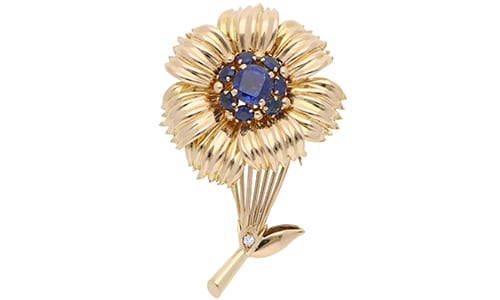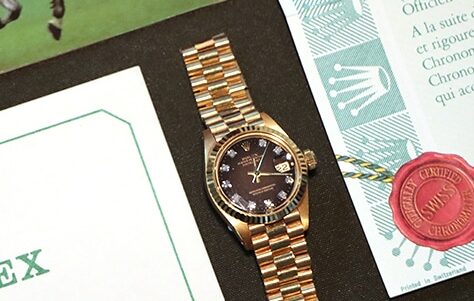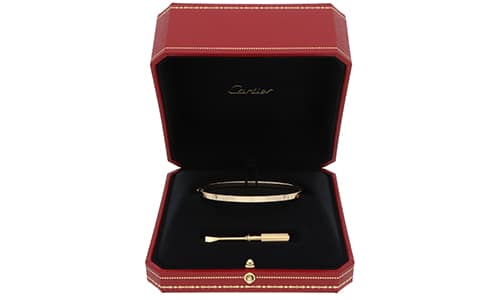Georgian Jewellery: A Buyer’s Guide
With popular jewellery periods of Victorian, Art Deco and Edwardian, Georgian jewellery can often be overlooked. However, the Georgian period is a fascinating era and offers beautiful jewellery showing off skill and the incredible craft for which this era is known.
What is the Georgian jewellery period?
While historians will debate the Georgian period, the general consensus is that it covers the reign of five different kings: King George I, II, III, IV and William IV. This period runs from 1714 until King William IV’s early death in 1837, when the Victorian period began.

What is the Georgian jewellery period?
While historians will debate the Georgian period, the general consensus is that it covers the reign of five different kings: King George I, II, III, IV and William IV. This period runs from 1714 until King William IV’s early death in 1837, when the Victorian period began.
What makes Georgian design distinctive?
Georgian designs focus on handcrafted opulence. The era drew inspiration from royalty and the reign of the Hanoverian kings, but there are also elements of design from France and Germany. As well as design inspiration from the French Revolution, Georgian designs also stretch across to the US, with creativity from American independence too.
In terms of culture, Georgian design can draw on neoclassicism and romanticism. All of which contribute to Georgian design revolving around richness, luxury and opulence.
What to look for in Georgian jewellery
The biggest draw of Georgian jewellery is that every piece is handcrafted and, therefore, unique. However, there are a few commonalities that help to make Georgian jewellery identifiable. Some of the classic techniques used to create Georgian jewellery include:
Gemstones
For Georgian jewellery, you are likely to find gemstones such as sapphires and rubies, while pearls are a popular choice for this era too. For diamonds, these tend to feature with table or rose cuts, while sapphires and rubies tend to be teardrop or cabochon cut shapes.
Another key Georgian jewellery feature is that gemstones were likely to have a closed-back setting or be foil-backed to help increase the sparkle of the gemstones and increase their scintillation.
Materials
18ct gold is a common feature in Georgian jewellery. While silver was also used, gold was the material of choice for Georgian jewellery and is typically seen in 18ct or higher. Due to the lack of industrialisation in this period, the materials used in jewellery were manipulated by hand, and gold was often hammered by hand to achieve the desired finish.
Metalwork
The handcrafted nature of Georgian jewellery means you can expect to see several metalwork practices. The Georgian era focused on bold, flamboyant, and grand designs, so drama was added to jewellery with metalwork techniques such as;
Cannetille – A process of twisting metals to achieve a woven, lace or spiral effect.
Repoussé – Another popular technique is repoussé, which uses hammering on the reverse side to imprint a design or create a raised impression for a 3D texture effect.

Designs in Georgian jewellery
The Georgian period saw some key historical finds, such as excavations in Pompeii and discoveries in Egyptian periods. As a result, designers took inspiration from these events, and it was common to see Roman-inspired motifs such as grape leaves, keys and laurels or Egyptian-inspired papyrus leaves.
Ornate, extravagant and Rococo styles were popular and bold motifs of crescents, ribbons, bows, and plumes of feathers were common. Flowers, foliage and leaves were also typical design embellishments for Georgian jewellery too.
Georgian jewellery pieces
Due to their vintage and the fact that Georgian jewellery used highly sought-after materials and gemstones, finding authentic Georgian jewellery can be challenging, and it is very much in demand. However, some Georgian jewellery you may find include:
Chokers – For necklaces, high-neck styles such as chokers and dog collars were popular in Georgian times. Riviere-style chains were and still remain popular; these are made from individually mounted gemstones that are linked together to create a strand of gemstones.
Parure – An innovation for its time, parure jewellery was customisable and convertible where a necklace could become two bracelets, or a broach could turn into a pendant or even earrings. This innovation gave jewellery owners a whole suite of jewellery options that could be adapted to suit different occasions. Nowadays, it is hard to find a complete set, but individual items are still sourced by vintage jewellery buyers.
Chatelaines – Considered beautiful pieces of jewellery and practical too, chatelaines were belts that wearers could attach accessories to them. A chatelaine could be used to carry watches, spectacles, perfume bottles or even writing instruments. Again, it is rare to find a full chatelaine; this is because decorative items from chatelaines were typically dismantled and recreated into pendants.
Finding Georgian jewellery with Susannah Lovis
Georgian jewellery really is a rare gem. However, Susannah Lovis work hard to source exquisite and authentic Georgian jewellery for our clients. If you’re looking for a particular piece or want help finding the perfect addition to your collection, Susannah Lovis is here to help. Reach out to our team, and we’ll work hard to source the perfect piece.











